So latest news with “Tetrageddon Games for the desktop” (better title pending) developments have been pretty exciting!
Since I’ve finished getting “all the games to work, and run perfectly, in the same ‘container/browser'” part I’ve actually been able to focus on creating new content.
New exciting areas that are like being electrocuted with bright colors! Yeah!
In itself, with just the games, I feel like it was still to lacking. I’m very proud of the visual presentation (random transitions, random backgrounds, etc…) but the games still where not enough in themselves.
I wanted to originally do a lot with the project, but given the limitations of the web (especially when it comes to “big files” and handling larger loads) I wasn’t ever really to “go there” to the fullest extent. In this case I can.
I mean, I know… I get it… It’s always sort of possible, but implementing that is a lot of work.
Nevertheless I digress… So the lacking part of it is that I think the main menu itself needed more character. This basically has the potential to be a world of it’s own. To do that you need inhabitants and tangents (easter egg like content). I’ve been putting a lot of focus on adding this now.
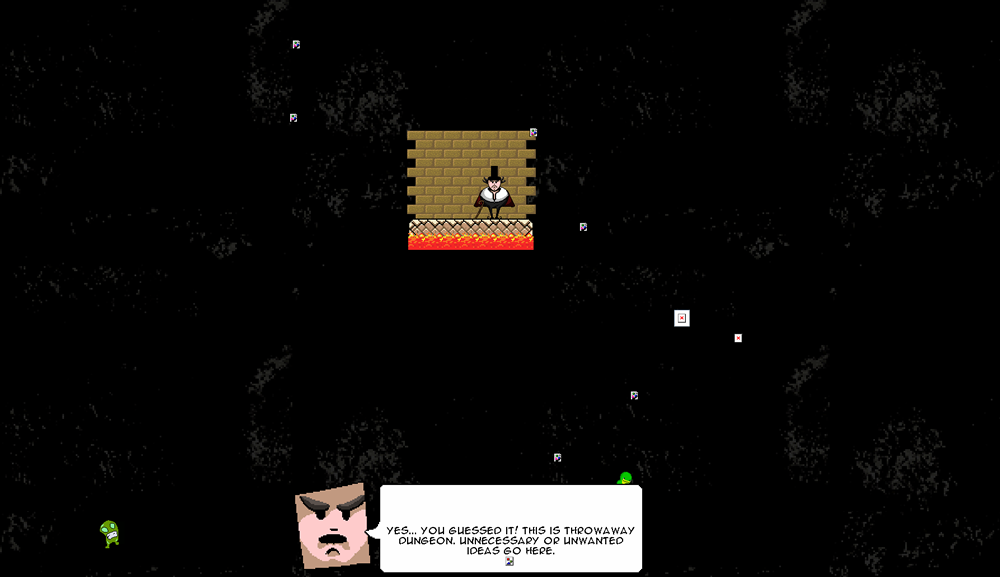
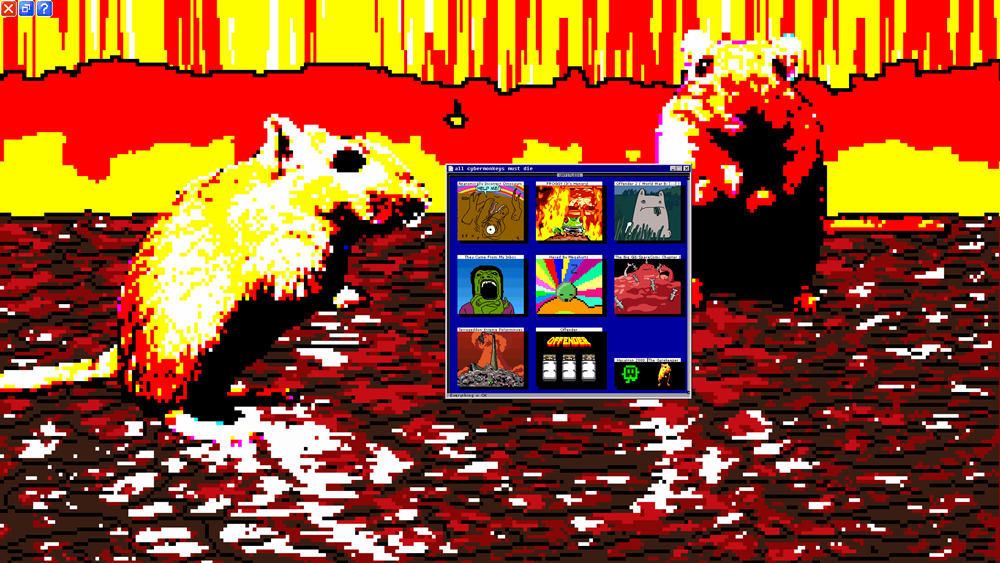
So my point of “inhabitants”… One charming thing I remember about older games (like “a link to the past” to pull out a random title), where all the extra people you could talk to… unrelated things. I don’t know… I know newer triple A games do this, but somehow it lacks the charm these older examples have. You can probably chalk that up to nostalgia, but this is another argument…
So you walk around, and meet these weird inhabitants, and sometimes it felt really surreal. It’s the surrealism I loved.
So now I’m looking at this newer Tetrageddon, and it has games, ok, but there’s lacking backend. It’s not really a world yet.
I got the idea to turn the main menu itself into a world, and now I feel like I’m getting somewhere. The main way I’m doing this is hiding things around as “easter eggs”.
For example, if you close Anatomically Incorrect Dinosaurs (close it from the window, not the default way of returning to the main menu), you find a little ghost sleeping there. You talk to the ghost, it goes off on a little rant, and then it floats away.
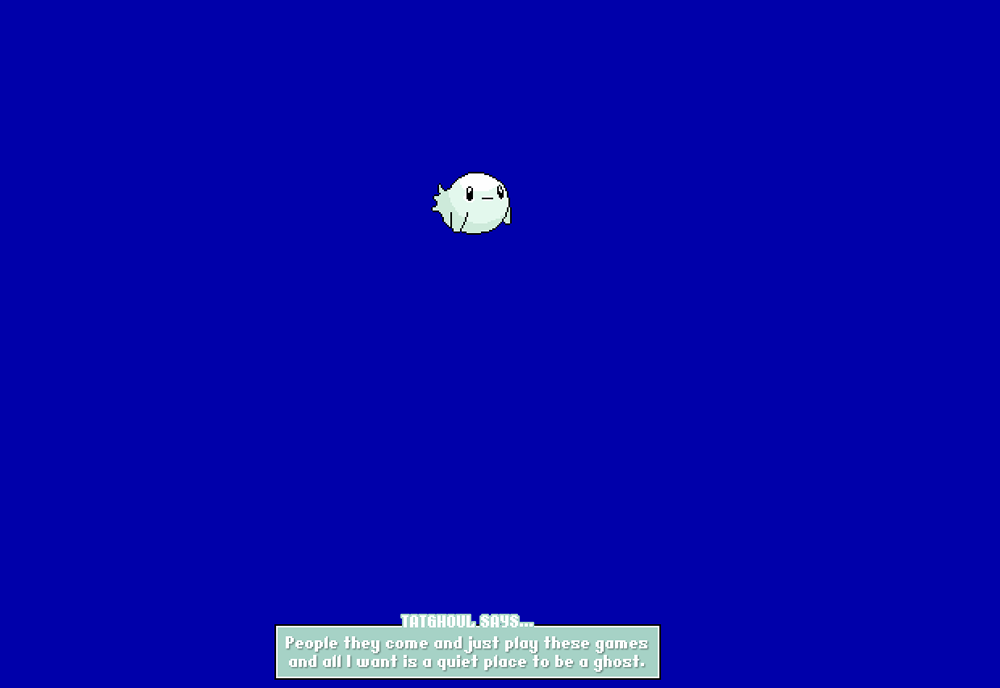
If you follow it you find a lair, where a potatoware farmer is farming fledgling electric love potatoes. These potatoes are little icons. You can open them, and have them running while you play the games. There’s a little background to this, but I don’t need to get into that.
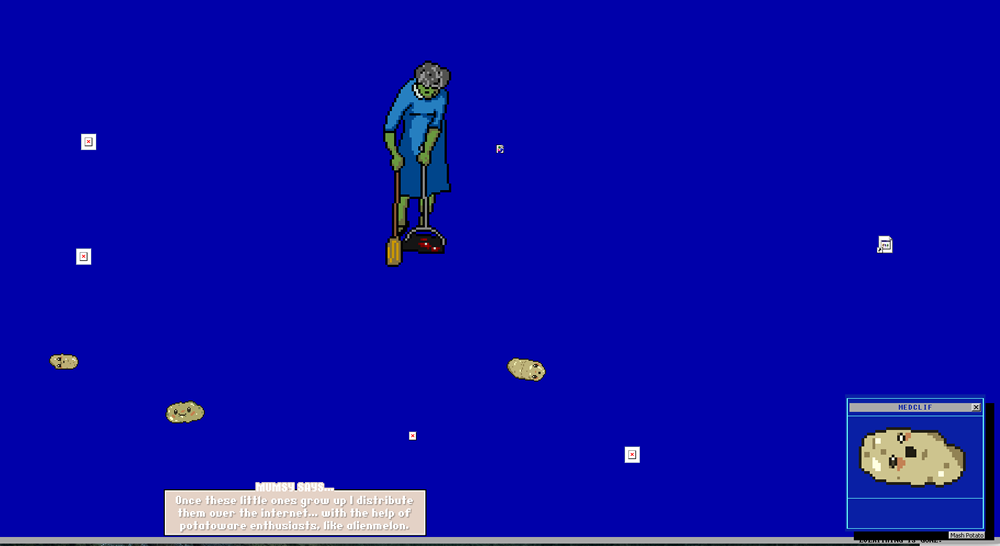
So all this starts to feel very special. In the odd event you actually find this hidden stuff, I think it will add a huge amount of depth.
For example, you can help cybermonkey escape.
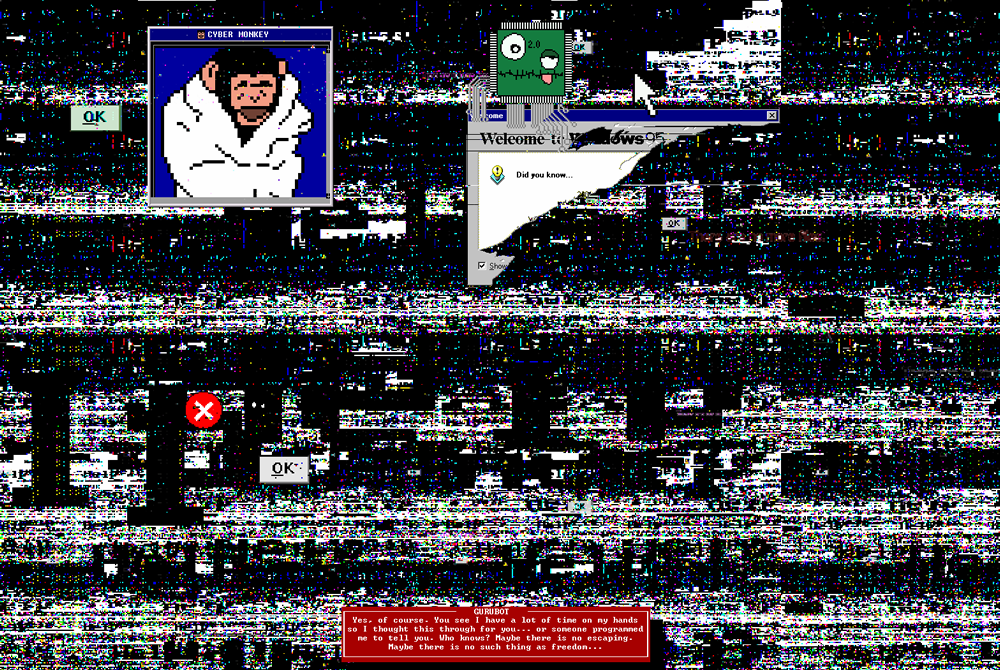
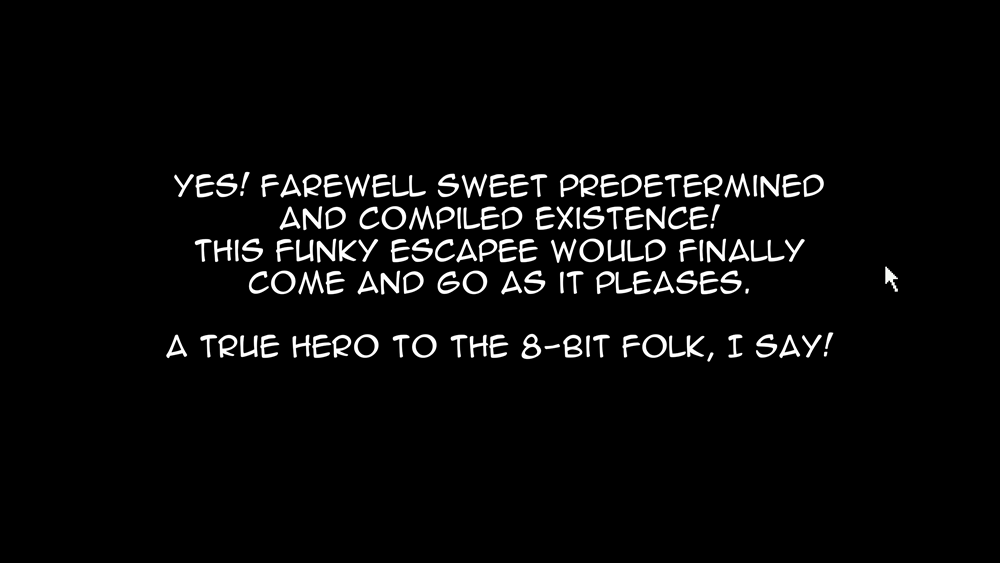
In the odd event that someone hits a keyboard directional key, or (more likely) clicks on the monkey, you find out you can move the monkey.
Monkey walks off screen, and into this zen-like backend void.
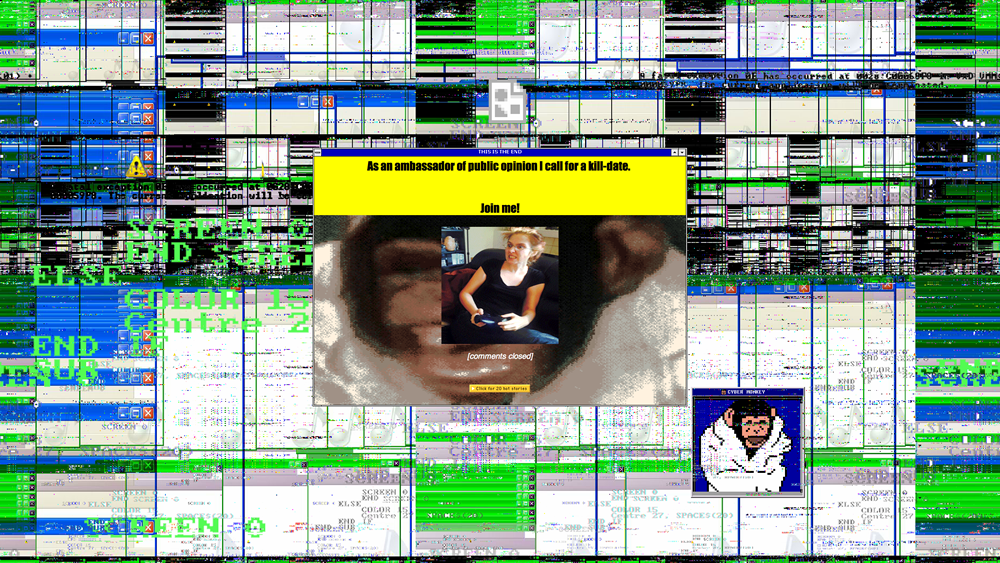
There are websites scattered around here that you can explore, or proceed on your mission to escape…

Which brings me to the topic of this post… websites in games!
Yay!
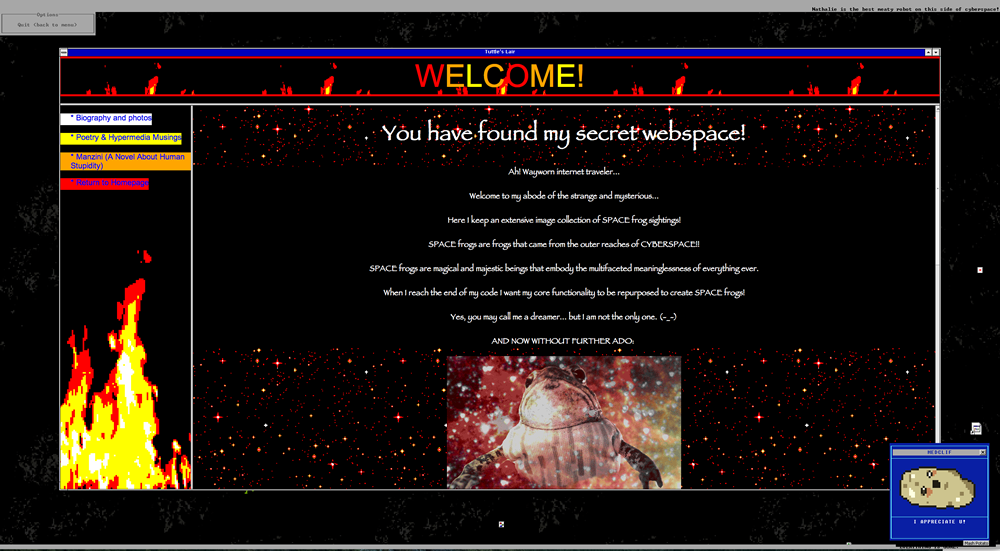
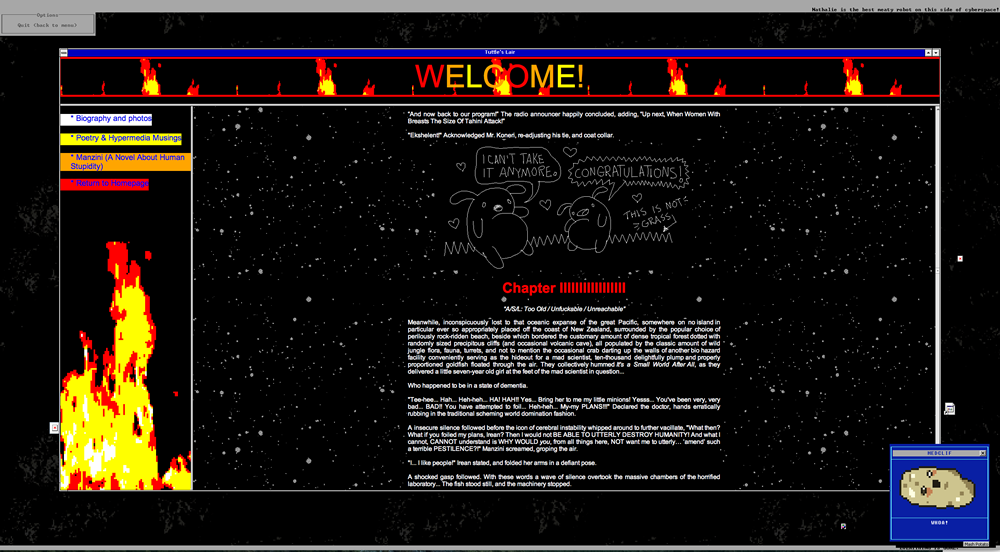
In its nature Tetrageddon Games is an experimental web project. It’s a parody of our online life… bla bla bla… end-pitch…
So ok, the web has lots of tangents. You click on a thing, get distracted by a thing, follow these links, and eventually you don’t know where you are anymore and forgot what you where doing in the first place… You know, that classic activity people used to do called “browsing”.
This is actually difficult to simulate in a game. I mean, you have characters, and a direction, and a goal, but it’s easier to recreate this with just plain text. There’s something inherently special about linking random pages together and dropping a person in the middle of it.
So to properly do justice to this I would have to actually make a “browser” for this game, and get web content running in it (accurately too, real html/js/etc…).
Thankfully this is very easy to accomplish.
There are many ways of getting this to work with ActionScript + AIR (yes, I’m using AIR, I am evil Flash person. Yes, all my games should die i am here to destroy your internet)…
At any rate…
You could use StageWebView, but this is exceedingly limiting.
The best solution for me was to go with HTMLLoader (which I’m largely using).
See: http://help.adobe.com/en_US/FlashPlatform/reference/actionscript/3/flash/html/HTMLLoader.html
The most notable appeal is the following:
“The features available and rendering appearance are the same as those of the StageWebView class, plus close integration and script bridging between ActionScript and JavaScript.”
And the script bridging is quite nice. You can literally mix javascript and actionscript, and enjoy the benefits of both.
For example: http://help.adobe.com/en_US/as3/dev/WS5b3ccc516d4fbf351e63e3d118666ade46-7ecf.html
From what I’ve gathered, watching other people’s uses of it, it can also be a replacement of sorts for ANE’s.
In my cases I want to have full on HTML content. Any website must just show up in the little “browser” and just work. Because I have lots of jquery content, canvas content, games, etc… I intend to just “drop in”.
I’ve successfully made it work! Weird html5 games I’ve built run perfectly in it, and I can display any type of website I want. Granted this is content that will run locally (you have to do some extra stuff if you want it to run remotely from web), but you get the idea. I could even have a Twine game running in this. So happy it works!
The appeal for me is that I want to bring some of the “weird web stuff”, impressions of online communities, random brokenness, random thoughts, parody people’s strong opinions (maybe), and have it run (as web content) inside this game… I said that before, but I like saying this because I think it’s so cool to have that working.
I don’t know, I find this immensely exciting! You click on a thing, it opens a website that’s running in this game.
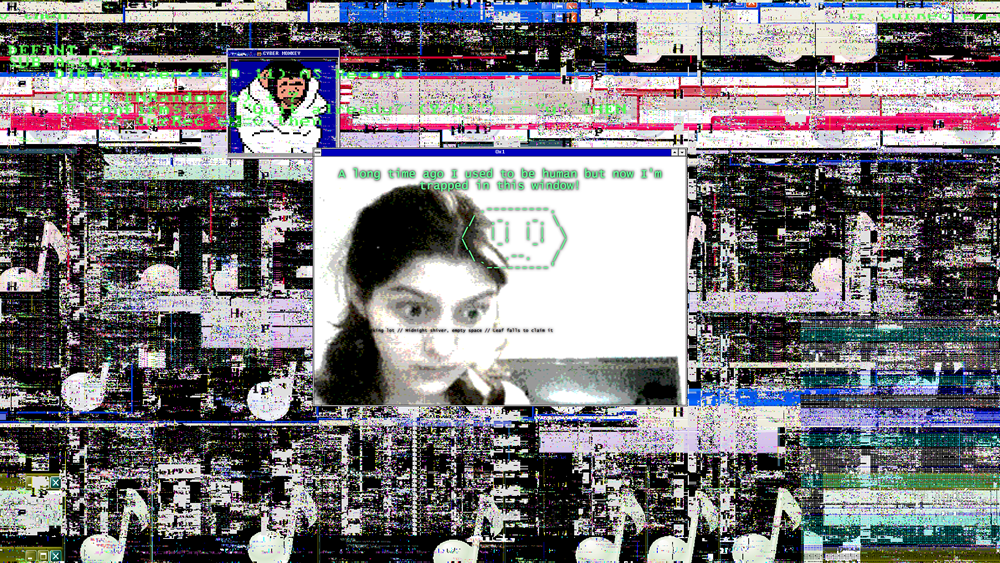
This opens a lot of possibilities for building on the environment here, and creating back stories, sub-stories, and tangents.
Creating websites is not hard too. Phew… actually not hard at all… At least in my opinion it is not, considering how much harder it is to build a game from 0 to completion.
Javascript is also an insanely easy/simple language to spend time with so it gives me a nice break from all the weird hard stuff.
I actually love AIR/ActionScript for this reason. Nothing is out of the box. If you want it (anything) you have to build it on your own. You want a scrollbar for your text? Go make it from scratch (probably bad example because there are some you can use)… Write your own physics… write your own ANE… do your own thing every-time. It may sound tedious, and it can get that way sometimes, but it opens so many doors for making weird unusual stuff. It’s really powerful that way.
I built my own solution for running the games in this… I mean, yeah it took longer, but I love how it works so “just right”.
It’s been a blast making this thing.
At any rate… Back to the point of HTML… The biggest hurdle in this case is coming up with all the written content/creating all the varying websites (styles, how they link together, etc…).
It’s a lot of content to create, but because it’s so easy to make it I think the end result will be filled with many tangents and web-like distractions… At least I hope the end result will be this.
There’s lots of work to do, I guess, and it can get unbelievably exhausting.
I still have all that, and one more major area (easter egg), to create… Then it’s really done. At that point I’ve done everything I wanted to do with it.
Then I can finally start sleeping again!
Yay, sleep!
I have tried only StageWebView in an AIR project where I wanted to display a Vine, but the video wouldn’t play, I’ll give HTMLLoader a go (not sure why I didn’t know it existed). By the way, all that experimental stuff is inspiring, seeing weird stuff is refreshing.